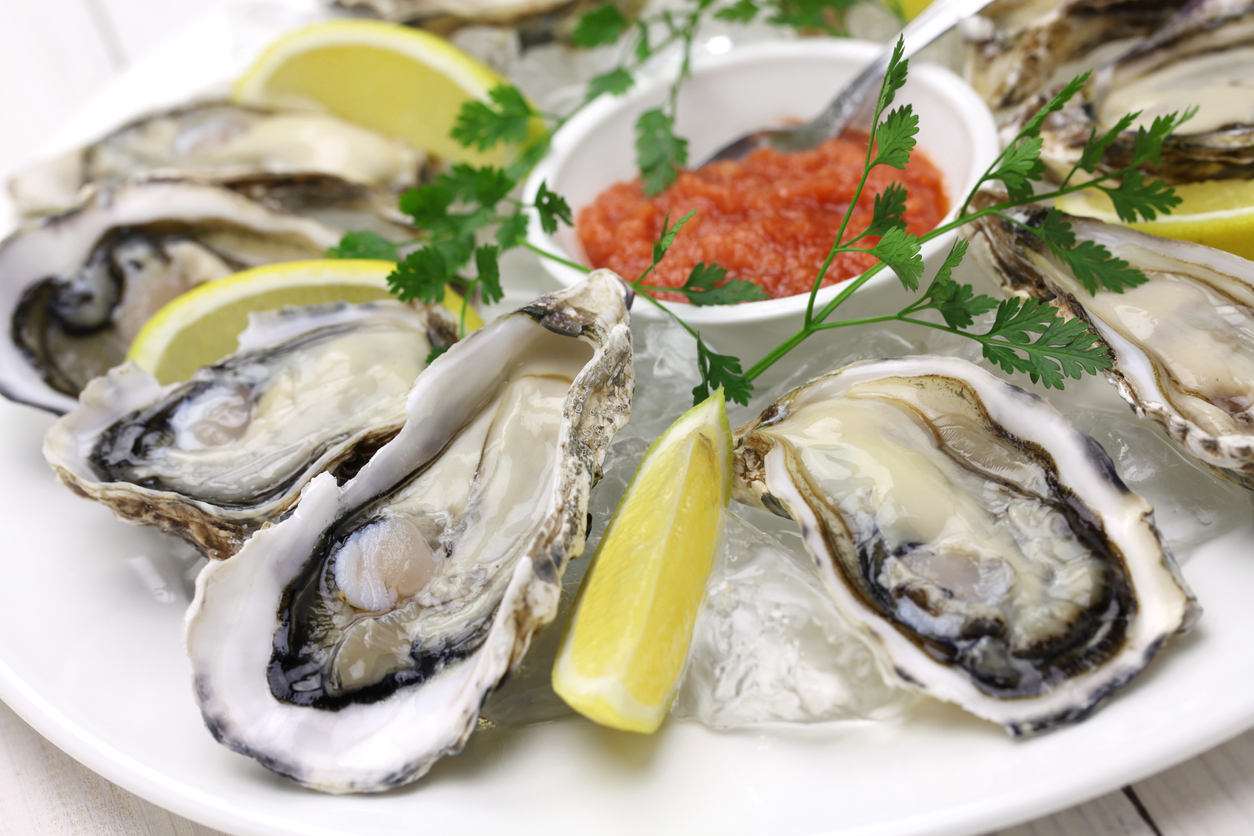From Ocean to Plate: The Journey of Oysters and their Market Value
From Ocean to Plate: The Journey of Oysters and their Market Value
Have you ever wondered about the fascinating journey that oysters take from the vast depths of the ocean to your plate? These delectable and luxurious mollusks have been cherished throughout history for their unique taste and aphrodisiac properties. Join us on a captivating exploration as we dive into the intriguing world of oyster cultivation, harvesting techniques, and their skyrocketing market value. Get ready to embark on an unforgettable culinary adventure where we uncover the secrets behind these little treasures of the sea.
Introduction: The Fascinating Journey of Oysters
Introduction: The Fascinating Journey of Oysters
Oysters are a delicacy loved by many seafood enthusiasts around the world. Known for their unique briny taste and creamy texture, these bivalve mollusks have been consumed by humans for thousands of years. But have you ever wondered where oysters come from and how they end up on your plate?
In this article, we will take you on a journey through the fascinating world of oysters – from the ocean to your plate. We will explore the different stages of their life cycle, the process of farming or harvesting them, and their market value.
Life Cycle of Oysters
The life cycle of an oyster begins with its larval stage. Female oysters release millions of eggs into the water, which are then fertilized by male sperm. These fertilized eggs develop into larvae called “spat,” which are microscopic in size and drift in the water column for two to three weeks.
During this time, they rely on nutrients from phytoplankton for growth and development. After reaching a certain size, spat settle onto hard surfaces such as rocks or other empty shells, where they attach themselves using their strong byssal threads.
Once attached, oysters go through various stages of growth until they reach maturity – which can take anywhere from one to three years depending on the species and environmental conditions.
History of Oyster Consumption and Market Value
Oysters have been consumed by humans for thousands of years, with evidence of their consumption dating back to ancient Roman and Greek civilizations. The first recorded oyster market was in the 1st century AD in Rome, where they were considered a delicacy and were highly valued by the upper class.
During the Middle Ages, oysters continued to be a popular food source, particularly in Europe. They were abundant and relatively easy to harvest, making them accessible to people of all social classes. In fact, during this time period, oyster beds were often considered public property and anyone could gather them for personal consumption or sale.
But as European exploration expanded around the world, so did the demand for oysters. These shellfish became a valuable commodity in trade routes between continents. Oysters from North America, specifically from Chesapeake Bay and Long Island Sound, were highly prized by Europeans due to their large size and rich flavor.
In the 19th century, advances in transportation and refrigeration technology revolutionized the oyster industry. Oysters could now be shipped long distances without spoiling, allowing for wider distribution and increasing their market value. This led to the rapid growth of commercial oyster farming along coastal areas throughout North America.
However, with increasing demand came threats to wild oyster populations. Over-harvesting and pollution from industrialization began to deplete natural oyster beds. This led to regulations being put in place to protect wild populations and promote sustainable harvesting practices.
Environmental Impact on Oyster Populations and Market Prices
The impact of the environment on oyster populations and market prices is a complex issue that has been a growing concern in recent years. Oysters, as filter feeders, play a crucial role in maintaining the health of their surrounding ecosystems. However, changes in environmental conditions can greatly affect their growth and survival, which ultimately impacts both the availability and price of oysters.
One of the main factors affecting oyster populations is water quality. Oysters are highly sensitive to pollution and thrive in clean, nutrient-rich waters. When there is an influx of pollutants such as agricultural runoff or sewage into their habitats, it can cause significant harm to these delicate creatures. High levels of nitrogen and phosphorus can lead to harmful algal blooms that deplete oxygen levels in the water, suffocating oysters and other marine life.
Rising ocean temperatures also pose a threat to oyster populations. As global temperatures continue to increase due to climate change, so does the temperature of our oceans. This rise in temperature affects not only the growth rate but also the reproduction success of oysters. Warmer waters can also make them more susceptible to diseases and parasites.
Ocean acidification is another major issue affecting oyster populations. With rising carbon dioxide levels in the atmosphere being absorbed by our oceans, seawater becomes more acidic, making it difficult for shell-forming organisms like oysters to build their shells properly. This can lead to stunted growth or even death for young oysters.
Factors Affecting the Market Price of Oysters
There are several key factors that can influence the market price of oysters, making this delicacy a highly volatile commodity in the seafood industry. Understanding these factors is crucial for both producers and consumers in predicting and responding to changes in market prices.
1. Supply and Demand:
Like any other product, the law of supply and demand plays a significant role in determining the market price of oysters. When there is an increase in consumer demand for oysters, prices tend to rise accordingly. This can happen during peak seasons such as holidays or special events where oysters are considered a popular menu item. Additionally, disruptions in supply due to weather conditions or diseases can also drive up prices as there may be a shortage of available oysters.
On the other hand, when there is an oversupply of oysters in the market, prices may decrease due to higher competition among producers to sell their products. This often happens during off-peak seasons when consumer demand is lower.
2. Location:
The location from which oysters are harvested can also significantly impact their market price. Oyster beds situated in areas with high tidal movements and nutrient-rich waters tend to produce more plump and flavorful oysters. These premium quality oysters command higher prices compared to those from less desirable locations.
Additionally, proximity to major markets can also affect pricing as it reduces transportation costs for producers, allowing them to offer their products at a lower cost.
– Supply and Demand
Supply and demand play a critical role in the journey of oysters from ocean to plate. These two economic forces determine the availability, pricing, and overall market value of oysters.
The supply of oysters is heavily influenced by environmental factors such as water temperature, salinity levels, and weather conditions. Oysters are filter-feeders and require clean, nutrient-rich waters to thrive. In areas with high pollution or over-harvesting, the supply of oysters may be limited. Additionally, natural disasters such as hurricanes or oil spills can greatly affect the supply of oysters in certain regions.
On the other hand, demand for oysters is primarily driven by consumer preferences and trends. Oysters have been considered a delicacy for centuries and are often associated with luxury dining experiences. As such, there is a strong demand for high-quality oysters among affluent consumers who are willing to pay top dollar for them.
Another factor that influences demand is seasonality. In some regions, like New England or the Pacific Northwest, peak oyster season falls during the colder months when most other seafood options are not as readily available. This increases consumer demand for fresh oysters during these times.
The balance between supply and demand determines the market value of oysters at any given time. When there is an abundance of high-quality oysters available on the market but low consumer demand (e.g., off-season), prices may be lower due to competition among suppliers trying to sell their product.
– Harvesting Methods
Harvesting Methods:
The harvesting of oysters is a crucial step in the journey from ocean to plate. It involves carefully extracting these prized shellfish from their natural habitat and preparing them for consumption. There are several methods used to harvest oysters, each with its own benefits and implications.
1. Hand Picking:
Hand picking is the traditional method of harvesting oysters that has been practiced for centuries. This method involves manually collecting individual oysters from their beds using tongs or rakes. It requires great skill and precision as the picker must identify mature oysters while leaving younger ones to grow further.
Hand picking ensures that only the highest quality oysters are harvested, as each one is carefully selected by hand. This results in a more consistent product with better taste and texture. However, this method is labor-intensive and time-consuming, making it less efficient than other methods.
2. Dredging:
Dredging is a mechanized harvesting method that involves dragging a specialized boat, called a “dredge,” along the ocean floor where oyster beds are located. The dredge scoops up large quantities of sediment along with the oysters, which are then sorted on board.
This method allows for larger quantities of oysters to be harvested at once, making it more efficient than hand picking. However, dredging can have negative impacts on the environment as it disturbs the ocean floor and can damage delicate marine ecosystems.
– Quality and Size of Oysters
The quality and size of oysters play a crucial role in determining their market value. Oysters are highly prized for their unique taste, texture, and nutritional value. However, not all oysters are created equal, and factors such as location, farming methods, and environmental conditions can significantly impact the quality and size of these delectable mollusks.
Location plays a significant role in the quality of oysters. Oysters grown in colder waters tend to have a more briny flavor with a firmer texture compared to those grown in warmer waters. This is because colder water stimulates the growth of plankton, which is the primary food source for oysters. Plankton-rich waters also provide optimal conditions for oyster growth and development.
Farming methods also influence the quality and size of oysters. Traditional wild-caught or hand-harvested oysters tend to be smaller in size but have a robust flavor due to their natural diet and environment. On the other hand, farmed oysters are typically larger in size due to controlled feeding and harvesting techniques. These farmed oysters may have a milder flavor compared to wild-caught ones.
Environmental conditions like water salinity and temperature also impact the quality of oysters. Changes in salinity levels can affect the osmotic balance within an oyster’s body, potentially causing stress or even death. Similarly, extreme temperatures can disrupt an oyster’s metabolic processes leading to reduced growth rates or mortality.
The Role of Aquaculture in the Oyster Market
Aquaculture, also known as fish farming, has been playing a significant role in the oyster market in recent years. Oysters are one of the most popular and valuable seafood products globally, and their demand continues to grow due to their unique flavor and nutritional benefits. However, with wild oyster populations declining due to overharvesting and environmental factors, aquaculture has become essential in meeting this increasing demand.
The primary purpose of aquaculture is to cultivate aquatic organisms under controlled conditions for commercial purposes. In the case of oysters, aquaculture involves growing them on ropes or trays suspended in water bodies such as coastal bays or estuaries. This method allows farmers to control various factors that affect oyster growth and quality, such as water temperature, salinity levels, and food supply.
One significant advantage of aquaculture is its positive impact on the environment. As opposed to traditional wild harvesting methods that often cause damage to marine habitats, aquaculture practices are more sustainable and have a minimal impact on surrounding ecosystems. Additionally, shellfish like oysters play a vital role in maintaining healthy ocean ecosystems by filtering water and removing excess nutrients.
Sustainable Practices for Maintaining the Market Value of Oysters
Sustainable practices play a crucial role in maintaining the market value of oysters. With growing concerns about the environment and the impact of human activities on marine life, consumers are becoming increasingly conscious of where their food comes from and how it is produced. As a result, businesses that prioritize sustainability not only contribute to preserving the health of our oceans, but also enhance their reputation and profitability.
Here are some sustainable practices that can help maintain the market value of oysters:
1. Oyster Farming Techniques: The methods used for farming oysters have a significant impact on their quality and taste. Sustainable oyster farming techniques focus on mimicking natural environments to promote healthy growth while minimizing negative impacts on surrounding ecosystems. This includes using floating or suspended cages instead of bottom-cultured systems, which can cause damage to seabed habitats.
2. Avoiding Harmful Chemicals: The use of harmful chemicals such as pesticides and antibiotics in oyster farming can have detrimental effects on both the environment and consumer health. Sustainable practices prioritize organic and eco-friendly alternatives to prevent contamination of water bodies and ensure the safety of consumers.
3. Responsible Harvesting: Over-harvesting can deplete oyster populations, leading to a decline in market availability and an increase in prices. Sustainable harvesting practices involve carefully monitoring stock levels, adhering to regulated harvesting seasons, and implementing size restrictions to allow young oysters time to grow before being harvested.
The Global Oyster Trade:
The global oyster trade is a thriving industry that plays a significant role in the economy and food culture of many countries around the world. Oysters, also known as the “ocean’s jewels”, have been consumed for centuries and their popularity continues to grow.
Historically, oysters were considered a delicacy only available to the wealthy due to their scarcity and high demand. However, advancements in technology and farming techniques have made oysters more accessible and affordable for consumers worldwide.
The majority of oysters are cultivated through aquaculture, which involves growing them on ropes or racks in designated areas of coastal waters. This method allows for controlled growth and harvest, resulting in consistent quality and supply throughout the year. The top producers of farmed oysters include China, Japan, South Korea, France, and the United States.
In addition to aquaculture, wild harvesting is also an important aspect of the global oyster trade. Wild harvested oysters are typically sourced from beds located in estuaries or intertidal zones where they can be naturally replenished by nutrient-rich water currents. These beds require careful management to ensure sustainable harvesting practices that do not harm natural populations.








Comments are closed.